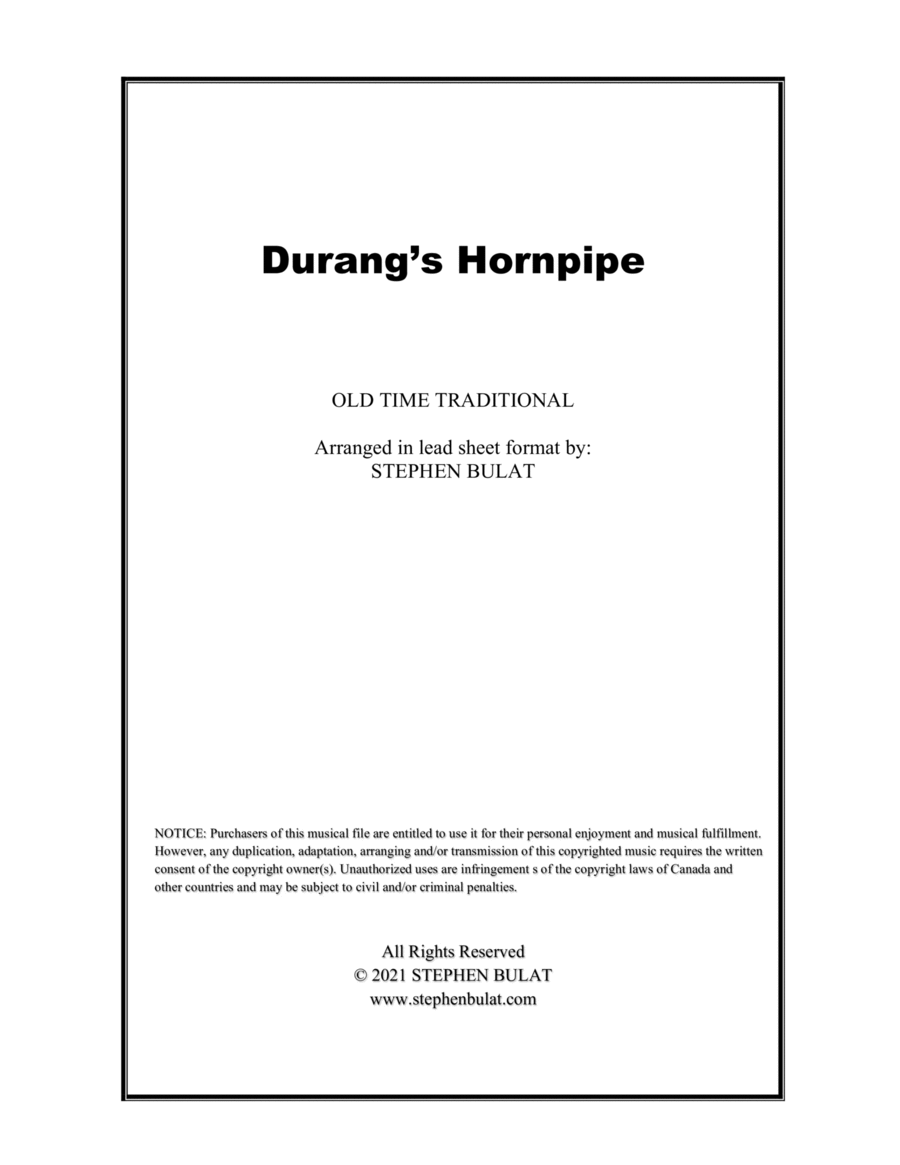Large Ensemble Alto Recorder,Alto Saxophone,Banjo,Bassoon,Clarinet,English Horn,Flute,Guitar,Harpsichord,Oboe,Organ,Piano,Soprano Recorder,Soprano Saxophone,Tenor Recorder,Tenor Saxophone,Trumpet,Ukulele,Viola,Violin,Voice - Digital Download SKU: A0.859091 Composed by Traditional. Arranged by Stephen Bulat. Celtic,Country,Folk,Holiday,Traditional. Score and parts. 3 pages. Stephen Bulat Publishing #6322429. Published by Stephen Bulat Publishing (A0.859091). There are many different variations of this old time traditional song, this melody which is one of the more popular. This old standard American fiddle tune, was apparently named after American dancer, John Durang (1768-1821) and supposedly composed for him in 1785. It is a popular tune played amongst bluegrass, old time and Celtic fiddlers.An old time, Celtic, Irish, bluegrass, Americana and fiddler songbook must-have, this arrangement has been gig-tested and has a very easy to follow roadmap with all essential music notes, musical cues and rehearsal markings throughout. Arrangement is in lead sheet format (melody, lyrics & chords) with the layout in a larger style font than lead sheets in a typical fakebook. This format can be used for guitar sheet music, for piano sheet music, as instrumental sheet music, vocal sheet music or as accompaniment to a soloist (violin, flute, singer)The perfect addition to the working musician's gig book. Please click on the publisher to view this song in other keys as well as to purchase it in the Celtic & Fiddle Fake Book.SMPPress publisher page: https://www.sheetmusicplus.com/publishers/stephen-bulat-sheet-music/3007289Online: http://stephenbulat.com
